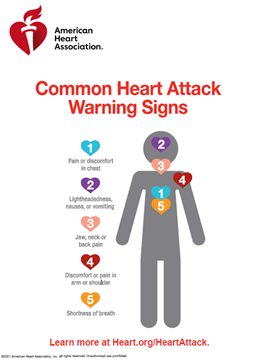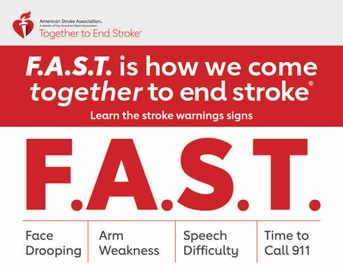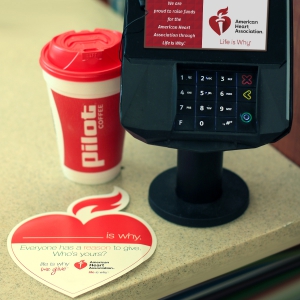We kicked off American Heart Month this February and are continuing to support the Life is Why™ Campaign with some advice from the American Heart Association on how you can recognize critical heart attack and stroke warning signs.
Tips from the American Heart Association:
We hear stories all the time of someone’s life being saved thanks to someone identifying the warning signs of a heart attack or stroke. Sometimes it impacts us directly, while at other times it impacts someone close to us. Learning these warning signs can save a life. When it comes to a life or death situation like this, every minute matters. Fast action is usually the difference between surviving and, unfortunately, not surviving.
Don’t wait to get help if you experience any of these heart attack warning signs. Some heart attacks are sudden and intense. But most start slowly, with mild pain or discomfort. Pay attention to your body and call 9-1-1 if you experience any of the following:
Chest discomfort. Most heart attacks involve discomfort in the center of the chest that lasts more than a few minutes – or it may go away and then return. It can feel like uncomfortable pressure, squeezing, fullness or pain.
Discomfort in other areas of the upper body. Symptoms can include pain or discomfort in one or both arms, the back, neck, jaw or stomach.
Shortness of breath. This can occur with or without chest discomfort.
Other signs. Other possible signs include breaking out in a cold sweat, nausea or lightheadedness
Symptoms vary between men and women often. As with men, women’s most common heart attack symptom is chest pain or discomfort. But women are somewhat more likely than men to experience some of the other common symptoms, particularly shortness of breath, nausea/vomiting, and back or jaw pain.

Stroke Warning Signs
By learning and sharing the acronym F.A.S.T., you just might save a life from stroke.

FACE DROOPING
Does one side of the face droop or is it numb? Ask the person to smile.
ARM WEAKNESS
Is one arm weak or numb? Ask the person to raise both arms. Does one arm drift downward?
SPEECH DIFFICULTY
Is speech slurred, are they unable to speak, or are they hard to understand? Ask the person to repeat a simple sentence, like “the sky is blue.” Is the sentence repeated correctly?
TIME TO CALL 9-1-1
If the person shows any of these symptoms, even if the symptoms go away, call 9-1-1 and get them to the hospital immediately.
Beyond F.A.S.T – Other Symptoms You Should Know
- Sudden NUMBNESS or weakness of face, arm or leg, especially on one side of the body
- Sudden CONFUSION, trouble speaking or understanding speech
- Sudden TROUBLE SEEING in one or both eyes
- Sudden TROUBLE WALKING, dizziness, loss of balance or coordination
- Sudden SEVERE HEADACHE with no known cause
Heart attack and stroke treatment begins in the ambulance. Research shows calling 9-1-1 helps patients get treated more quickly. Calling 9-1-1 also helps get you to the right hospital that can best treat your condition. Even during the COVID-19 pandemic, it’s SAFE for EVERYONE to call 9-1-1. It’s SAFE for ANYONE to go to the hospital.
For more information on how you can join Pilot Company and be a part of the American Heart Association Life is Why™ Campaign, visit https://www.pilotflyingj.com/life-is-why.

